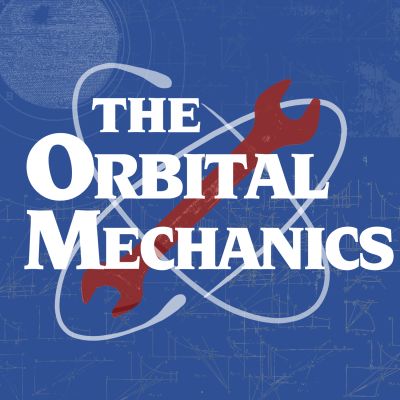Every week we cover the latest spaceflight news, discuss past, current and future exploration efforts, and take a look at upcoming events. Tune in to hear about how humans get to space, how they stay in space and how unmanned craft reach farther and farther into the universe around us.
https://theorbitalmechanics.com/show-notes/
Episode 195: DATA RELAY--Spacecraft Navigation
This week in SF history
— January 31, 1961: Mercury MR-2 (wikipedia.org)
Spaceflight news
— Starship Hopper's nose cone knocked over by heavy winds. (brownsvilleherald.com)
Short & Sweet
— Commercial crew swaps an astronaut. (spacenews.com)
— Blue Origin is coming to Alabama. (spacenews.com)
— Hubble’s primary camera is back online.
(spaceflightnow.com)
Questions, comments, corrections
— By-line mixup, Chris Bush vs Ben McPheron
Data Relay: Spacecraft Navigation
— Thanks to Ben McPheron for researching and presenting this topic
— twitter.com/bdmcpheron
— benjaminmcpheron.com
— youtube.com/DMExplains
— Three interrelated systems: Guidance, Navigation and Control (GNC) (wikipedia.org)
— Onboard sensors
— Even high quality sensors drift (PDF: orbit.dtu.dk) (youtube.com)
—Inertial sensors (IEEE)
— Gyroscopes (PDF: orbit.dtu.dk)
— Hubble used gas bearings (spacetelescope.org)
— Optical gyroscope (PDF: orbit.dtu.dk) (wikipedia.org) (PDF: nasa.gov)
— First optical gyroscope in space was the Rossi X-Ray timing Explorer spacecraft, launched in 1995 (PDF: nasa.gov)
— Sagnac Effect (youtube.com)
— Inertial measurement Units (wikipedia.org) (nasa.gov)
— Magnetometers measure the size and orientation of the magnetic field (PDF: orbit.dtu.dk)
— Eight different types in one particular source (engineersgarage.com)
— Orbital models (PDF: orbit.dtu.dk)
— Non inertial sensors for determining attitude
— Sun sensors (PDF: orbit.dtu.dk) (wikipedia.org)
— Solar Panels (youtube.com)
— Star Trackers/Star imagers (nasa.gov) (PDF: orbit.dtu.dk) (science.gov)
— Update rate on star trackers are generally 1-10 Hz, but can be up to 100 Hz at max (PDF: OSApublishing.org)
— Hubble’s Fine Guidance System (HubbleSite.org)
— Apollo ‘Person In Loop’ Star Tracking (NASA.gov) (Astronomy.com) (youtube.com)
— Lovell had to work hard due to the field of debris around his vehicle (wikipedia.org)
— Shuttle had one too, located forward and left of commander’s window (NASA.gov)
— RADAR/LIDAR (NASA.gov)
— Used in Apollo, specifically for lunar landing (NASA.gov)
— Offboard sensors
— RF beacons can be used as reference (PDF: orbit.dtu.dk) (wikipedia.org)
— DSN Precise One Way Metric Tracking (PDF: jpl.nasa.gov)
— Single-sample accuracy up to 0.05 mm/s and 3 m (scientificamerican.com) (PDF: researchgate.net)
— NASA would like to update this to use laser communications (PDF: nasa.gov)
— JPL leading development of a deep space atomic clock to further improve this system (jpl.nasa.gov)
Future technologies
— X-ray pulsar navigation
— Developed at NASA Goddard (PDF: nasa.gov)
— Closely analogous to GPS tracking (nasa.gov)
— Make use of a large number of extremely stable millisecond pulsars (howstuffworks.com, nasa.gov)
— SEXTANT experiment on ISS (nasa.gov)
